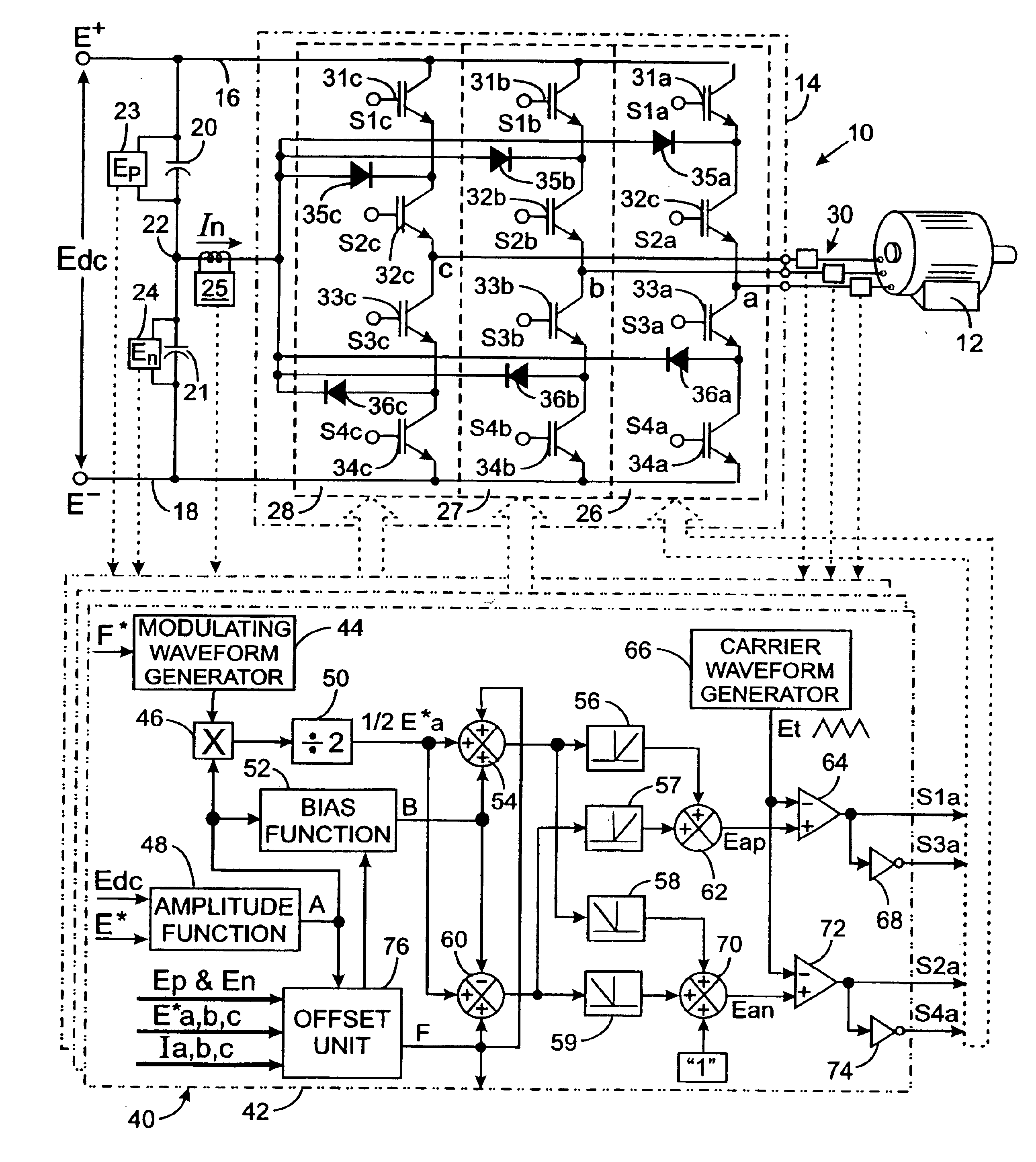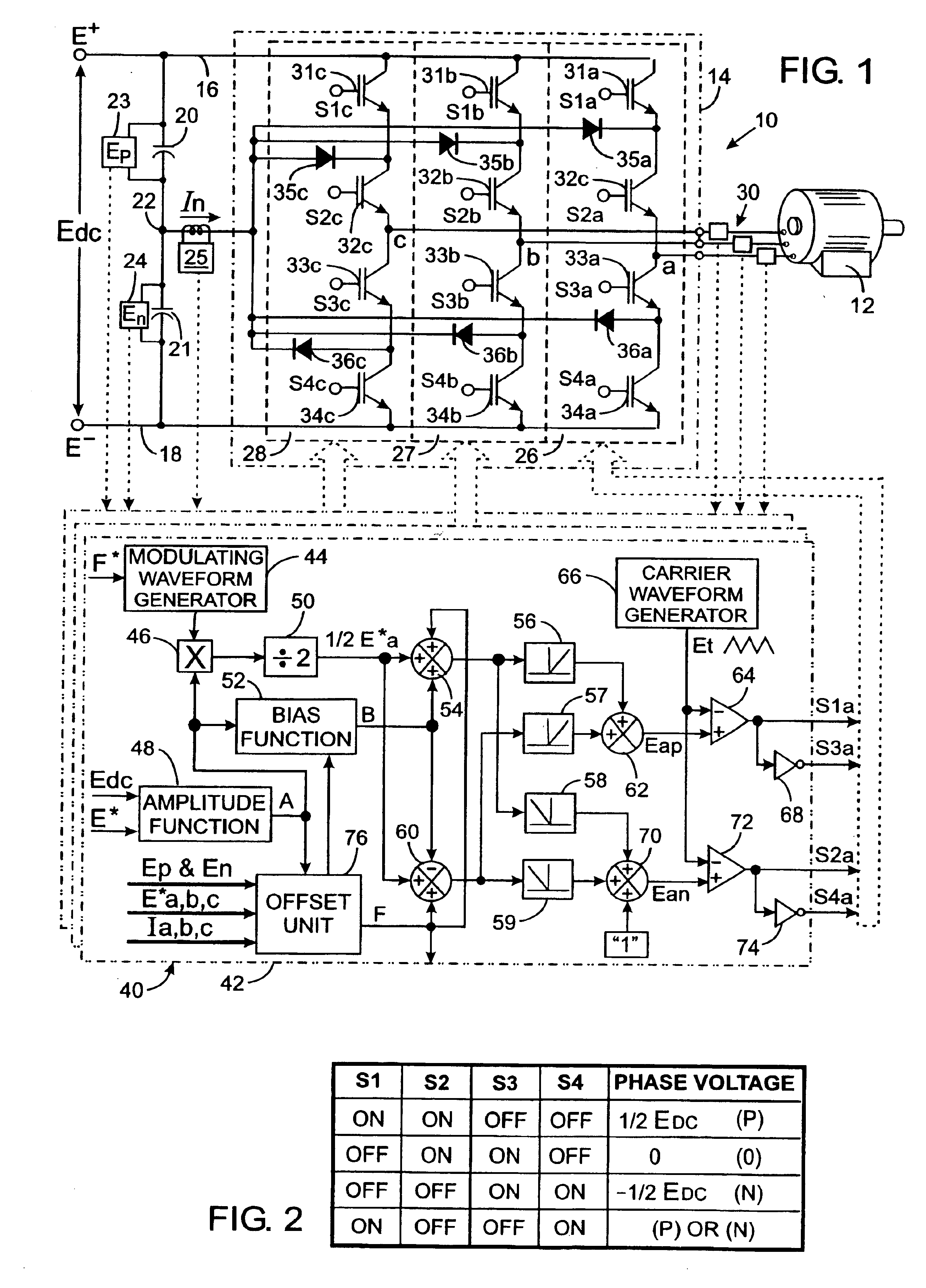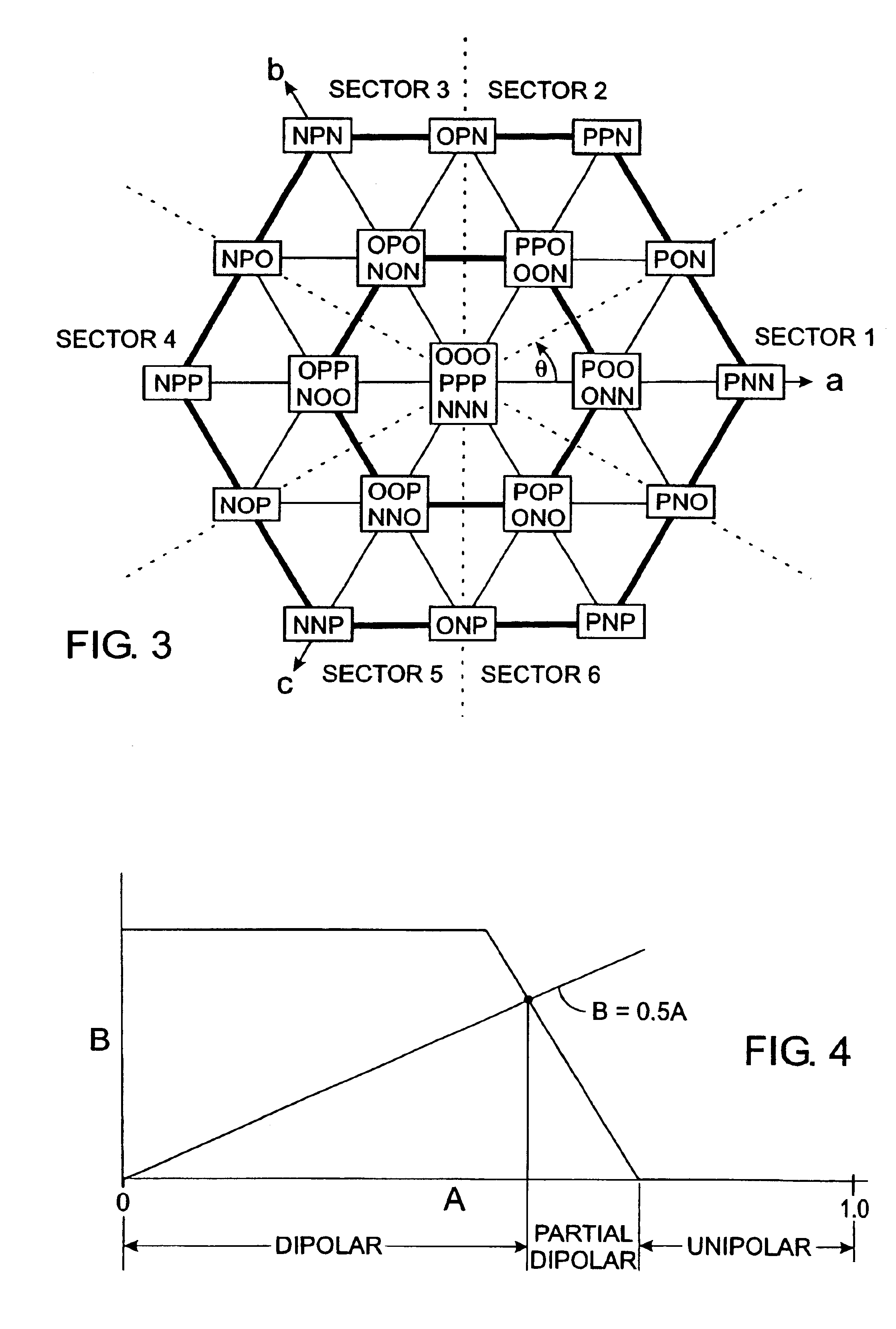Capacitor charge balancing technique for a three-level PWM power converter
a technology of pwm power converter and capacitor, which is applied in the direction of dc-ac conversion without reversal, process and machine control, instruments, etc., can solve the problems of high voltage on some switches, voltage across the two capacitors frequently becoming unbalanced, and dc components of current flowing into and out of the neutral nod
- Summary
- Abstract
- Description
- Claims
- Application Information
AI Technical Summary
Benefits of technology
Problems solved by technology
Method used
Image
Examples
Embodiment Construction
nt and its average value in the partial dipolar modulation mode of the present power converter;
[0039]FIG. 22 is a flow chart of an second version of a procedure according to the present invention for determining the capacitor voltage imbalance compensation coefficient;
[0040]FIGS. 23A and 23B graphically illustrate the relationship of signals at inputs of two comparators in the present power converter which utilizes the imbalance compensation procedure of FIG. 22;
[0041]FIGS. 24A, 24B, 24C and 24D depict control signals for semiconductor switches in one inverter phase branch as a result of the imbalance compensation procedure of FIG. 22;
[0042]FIG. 25 is a graph of the resultant phase to neutral voltage produced by the control signals in FIGS. 24A-D; and
[0043]FIG. 26 is a graph of the neutral current and its average value which result from the control signals in FIGS. 24A-D.
DETAILED DESCRIPTION OF THE INVENTION
[0044]With initial reference to FIG. 1, a power converter 10 is provided to ...
PUM
 Login to View More
Login to View More Abstract
Description
Claims
Application Information
 Login to View More
Login to View More - R&D
- Intellectual Property
- Life Sciences
- Materials
- Tech Scout
- Unparalleled Data Quality
- Higher Quality Content
- 60% Fewer Hallucinations
Browse by: Latest US Patents, China's latest patents, Technical Efficacy Thesaurus, Application Domain, Technology Topic, Popular Technical Reports.
© 2025 PatSnap. All rights reserved.Legal|Privacy policy|Modern Slavery Act Transparency Statement|Sitemap|About US| Contact US: help@patsnap.com



